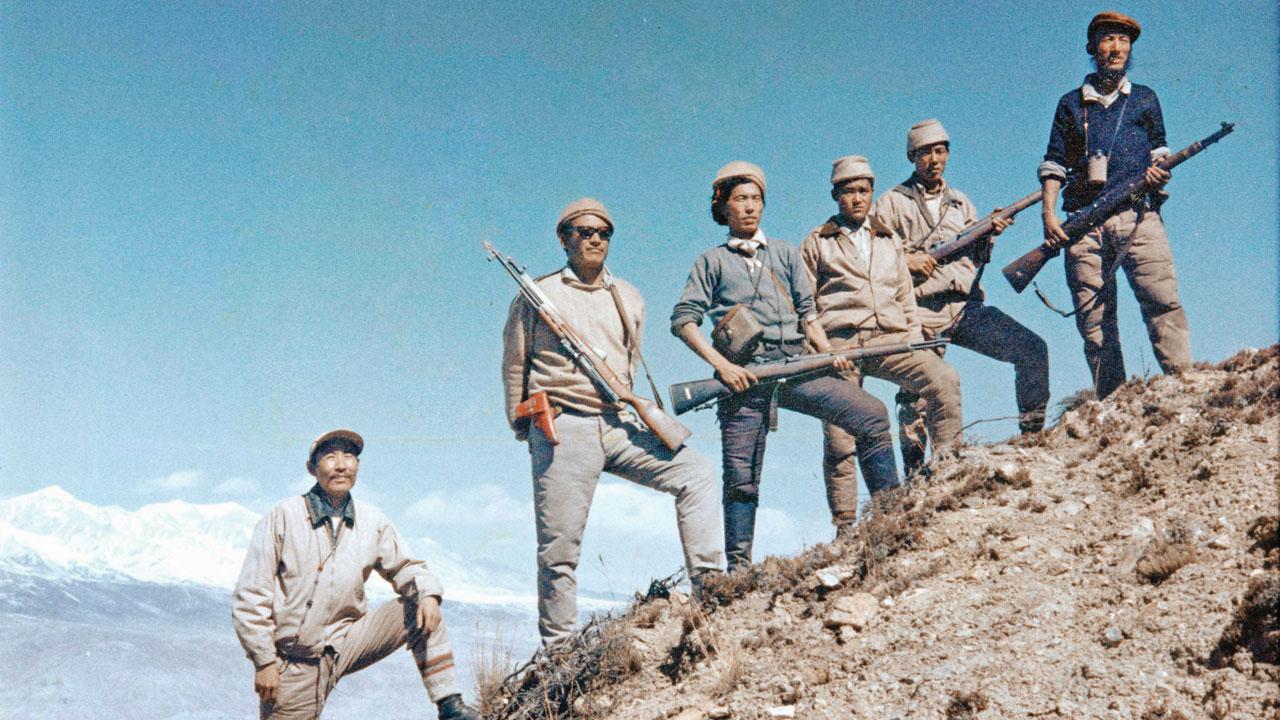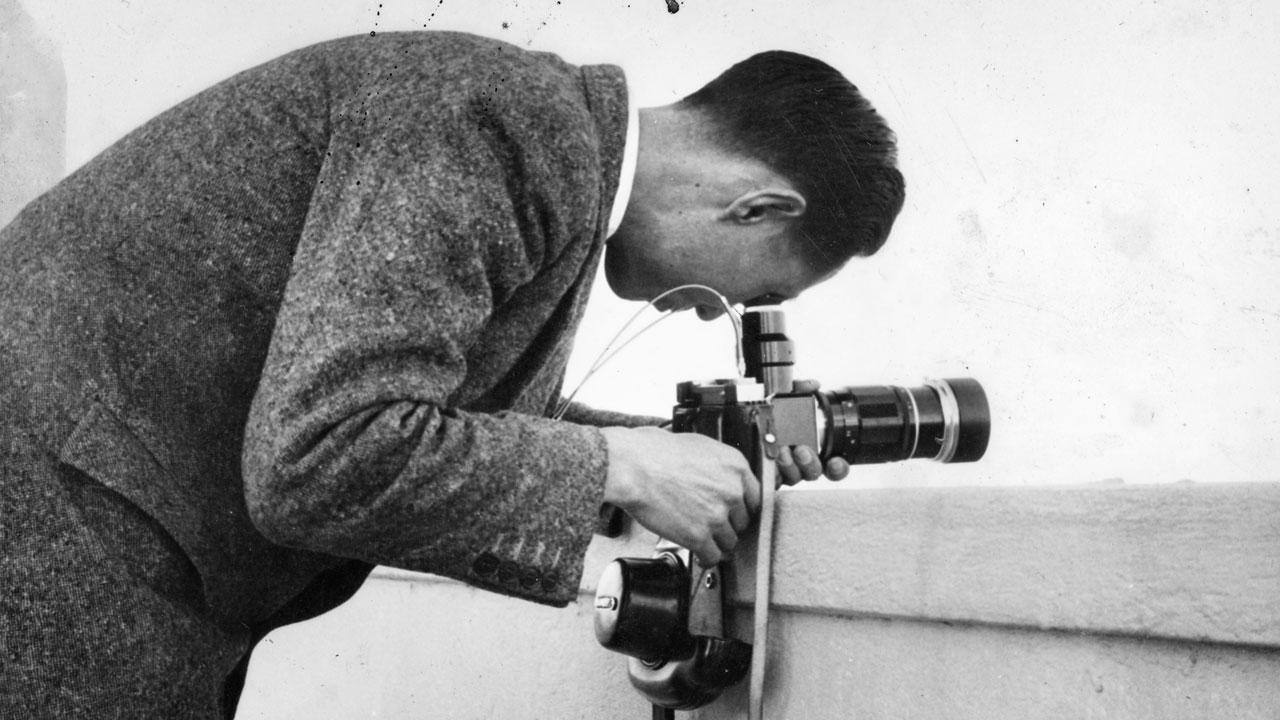Through records maintained by his freedom fighter father, filmmaker Tenzing Sonam and spouse Ritu Sarin document the hidden struggle of the Tibetan community in a new exhibition in Colaba

Lhamo Tsering and other members of the resistance pictured in Mustang, in the late 1960s. PIC/WHITE CRANE FILMS
We are displaying stories that have never been properly told or appreciated,” says film director Ritu Sarin, who, alongside her husband Tenzing Sonam, created an archival exhibition of the Tibetan resistance, entitled Shadow Circus.
ADVERTISEMENT
The focal point of this exhibition is the Tibetan guerrilla resistance, which began in the 1950s as a response to the Communist Chinese occupation of Tibet. The CIA became involved in the Tibetan uprising in the late 1950s. Codenamed STCIRCUS, its covert operation ran for over a decade, before being abandoned in 1969, once US foreign policy became more conciliatory in its approach to China. The Tibetan resistance, which collapsed in 1974, is frequently reduced to a footnote in the story of the Cold War epoch, but Sarin and Sonam are intent on changing that.
They tell mid-day over email, “It was a struggle that continued even after the fall of Lhasa in March 1959, when the Dalai Lama was forced to flee to India. A fresh armed movement was then launched from India and Nepal, which was partly supported by the CIA, and later, by the Indian intelligence services. Many Tibetans sacrificed their lives in this battle, and we felt it was very important to keep the memory of the resistance alive and to re-examine it in the context of the continuing struggle against the Chinese occupation of Tibet.”
For the married couple at the helm of this project, the inspiration behind the archival display goes beyond a mere interest in untold history, and instead, is rooted in Sonam’s fascinating family background. The Dharamshala-based writer and film director is the son of Lhamo Tsering, a Tibetan freedom fighter who was imprisoned in Nepal for seven years for his role in the resistance.

Ritu Sarin and Tenzing Sonam
“[Tsering’s] involvement in the resistance happened by chance,” the couple tells us. “He came from a small village in the borderlands of north-eastern Tibet, where, even in his childhood, Tibetans were already swamped by Chinese settlers. In the mid-1940s, as a student in Nanking, he met Gyalo Thondup, the Dalai Lama’s elder brother. It was an encounter that would change his life.” Thondup, now aged 95 and residing in Kalimpong, West Bengal, remains one of the most well-known individuals in Tibetan history.
Sarin and Sonam have worked together for over 30 years. Their film production company White Crane Films is committed to bringing the legacy of Tsering and his fellow Tibetans to light. Shadow Circus, which began on July 27, comprises Tsering’s personal records of the resistance. Sarin and Sonam tell us, “He saved thousands of photographs, documents, letters, and maps. After his death in 1999, these came into our custody. As part of the Shadow Circus exhibition, we will be displaying some of these artefacts in conjunction with material we gathered in the course of our own research. These include excerpts from video interviews that we made with former resistance fighters and CIA officers.”
 Lhamo Tsering recorded the struggle in photos and documents
Lhamo Tsering recorded the struggle in photos and documents
The couple explains that the decision to display Shadow Circus in India is an intentional one. “Most Indians today, especially the younger generation, are unaware of Tibet’s recent history. They take it for granted that India’s northern border is with China but the reality is that until China invaded and occupied Tibet in 1950, India and China never shared a common border. We feel it is important for Indians to have a fresh perspective on the Indo-China situation with particular emphasis on the role of Tibet, which has always been a buffer between the two countries.”
Primarily, however, Sarin and Sonam want to use Shadow Circus to tell the truth about a resistance that has so often been undermined and forgotten. Historians often omit this story to favour the non-violent aspects of the struggle.
“When we look at the annals of this era, there is very little mention of Tibet,” Sarin says, adding, “Relative to the larger battles that were being fought between the West, the Soviet Union and China, Tibet was simply, as one CIA officer put it, ‘a nuisance operation.’ An insignificant episode. And yet, for Tibetans it remains an integral and indelible part of their continuing freedom struggle, one where thousands put their lives on the line for their country, fighting against hopeless odds for independence.”
WHAT: Shadow Circus: A personal archive of Tibetan Resistance (1957-1954)
WHEN: July 27 to August 26
WHERE: Experimenter, Colaba
 Subscribe today by clicking the link and stay updated with the latest news!" Click here!
Subscribe today by clicking the link and stay updated with the latest news!" Click here!







